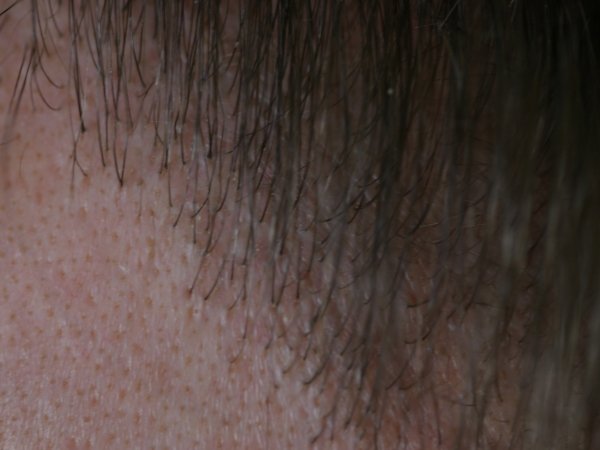This is my first post, I want to thank everyone for sharing their stories, good or bad, all very helpful. I am thinking of pulling the trigger next year with Armani. I have a question for Bucket and Shanti: if you could start all over again, what would you have done differently? Would you rather not have the surgery and simply go bald naturally?
» This is my first post, I want to thank everyone for sharing their stories,
» good or bad, all very helpful. I am thinking of pulling the trigger next
» year with Armani. I have a question for Bucket and Shanti: if you could
» start all over again, what would you have done differently? Would you
» rather not have the surgery and simply go bald naturally?
Hey YM. I don’t know if I would have not done it, but I would have done it much more smartly. My hair loss is extremely mild, and since I got on propecia at 18, I stabilized it very early. Since there may be some serious cures in 15 years, I am not too worried about going bald naturally if the propecia continues to work as it has over the last 5 years.
But I would be much more economical with my hairs. My total graft transplant is 2600. This is not too many, but it is a lot for something that looks so phony I have to comb over it. I might as well just have not done it, and saved $ and grafts. But maybe it looks fake because it is not dense enough. I wish I would have had the hairline only half as lowered, but twice as dense.
» Hi Bucket,
»
» I’ve been in the same situation for the last 8 years and believe me I know
» where you are coming from… Although it looks ok in the photos I know the
» reality.
»
» I have the same deal, same hair colour and characteristics. My full story
» of 7 FUE sessions to date is on other forums but when I read your post I
» decided to register.
»
» The problem we have my friend, as has already been correctly pointed out,
» is our white skin and dark/ coarse hair characteristics.
»
» Thick, non miniaturised donor hair will never match natural hairline hair,
» especially with our characteristics. A God given hairline is soft, fine and
» and doesn’t suffer from the black dot “bulb” effect where the transplanted
» grafts enter the skin.
»
» I’ve tried for years to create a perfectly natural hairline and while in
» my opinion it is actually impossible, you can get close with a few tricks.
»
»
» Blonde, grey and light hair or those with dark skin, this doesn’t
» necessarily apply to. The minimal contrast between hair and skin makes
» transplants far more natural to the naked eye.
»
» 1) Density is key. With dark hair any gaps will make the isolated grafts
» stand out a mile. They’ll just look wrong in the hairline if you can see
» light through or space around them. Problem is with good natural density
» like yours and mine you have to go very dense to make it work.
»
» I failed for years to create the density require for me to be satisfied
» that my hairline would look natural in all situations. I just couldn’t
» achieve it despite going to some of the best doctors. I believe the
» “illusion of density” doesn’t work with our hair characteristics. I think
» you actually need more density than your original natural density to hide
» the thicker shafts of the donor transplanted hair… and that just isn’t
» feasible with our limited supply.
»
» 2) Hair angle. This has been the answer to the density issue for me.
»
» Central hairline: hair should beplanted so they point almost down the
» forehead or at least straight out from the centre. Then when they grow,
» gravity (or the natural fall of the hair) allows the shaft of the hair to
» hide the hair root.
»
» Temple angles: these again should be planted downwards or as in one my
» temples as a cowlick where the grafts are planted acute to the skin at an
» horizontal/ downward angle back and towards my temple points/ ears. This
» means the density can be less as they lie on top of one another.
»
» This results in allowing me to either wear my hair down in a fringe …
» or if I want to sweep it back, because the hairs are angled down, then each
» hair has to double back on itself, hiding the root and in the process,
» naturally adding more density.
»
» Problem is most doctors plant up and out along the hairline and this shows
» the root and shaft.
»
» 3) Nape hair (and maybe body hair?). I’ve used softer nape hair but you
» need so much of the damn stuff to make a cosmetic difference. I have a few
» transplanted nape hairs that are so beautifully fine and soft … but they
» may as well not be there. Cosmetically they are too fine and delicate to be
» any use. I’d probably need two or three times as many as my back of the
» head donor hair.
»
»
» I can’t quite see how bad the situation is and how many are transplanted
» grafts that grew. From what I can tell you might be better of getting rid
» of them by laser or FUE and just sticking with your original hairline
» (which was good!).
»
» If you won’t be happy with that then it will require a a fair bit of
» effort and grafts and a smart surgeon to create a satisfactory result.
»
» All the best with what ever you decide.
»
» Shanti
Thanks Shanti, it is very helpful to hear your reply as your hair is similar to mine. Yes, that black bulb where the hair is planted into the scalp. That is where it looks goofy! Like you need it way more dense to cover over that bulb.
I’m surprised about your idea of it being planted so it grows out towards your nose. I see what you mean about it having to double back on itself when you slick it back. But the problem is that with our hair being so thick and wavy, it won’t slick back. Mine at least, don’t know about yours. My hair points down to my nose, and I can’t get it to stay bent back. This is why it looks fake I think also, in addition to the bulb.
What I wish I could do is remove the grafts, and put them back in, but only half as low (and thus twice as thick). The doctor went lower then I thought he was going to anyway, even with that marker he drew out. I was so surprised at how sparse it was, that I stupidly got a second one with him. And it still isn’t dense enough. So I comb over it. Really dumb use of grafts and money.
» This is my first post, I want to thank everyone for sharing their stories,
» good or bad, all very helpful. I am thinking of pulling the trigger next
» year with Armani. I have a question for Bucket and Shanti: if you could
» start all over again, what would you have done differently? Would you
» rather not have the surgery and simply go bald naturally?
Hi YM,
Good question. How old are you?
If I could start again then I’d hope I wouldn’t do it.
Photos don’t tell the whole story and hair transplants are a compromise. They work best usually on an older patient and/or on someone who has lost their hairline and will be satisfied with some coverage.
I was 28 and like many I tried to convince myself that I had stabilised, the drugs would save me and there would be a cure in 10 years. Naive and unwise tactics… I was just telling myself what I wanted to hear.
On younger patients who are touching up their hairline to keep their youth (as I did), on the whole it is a recipe for disaster. You’ll be forever playing catch up with your hairloss and you’ll use up all your donor just at the front.
I thought it would be a solution to my hairloss and I would stop thinking about my hair. To be honest it made me think and analyse my hair more.
I don’t care about the money. It’s more the time I’ve wasted. It has taken years to get to a satisfactory point and I know I haven’t finished and I will continue to lose more hair as I age.
Try and embrace your hairloss. You’ll be a better person for it but if you can’t and you decide to go ahead then…
Ignore the photos, especially those presented by the clinics. Photos lie. End of story. Just look at Buckets original photos at the beginning of this thread. They look not too bad to us but clearly he’s very unhappy with how they look to him in real life.
My hair looks completely undetectable in a photo. It looks incredible. The reality in the flesh is different. When I look in the mirror I can see it’s a transplant and while no one else would detect it, the fact that I can see it’s not perfect is enough to make me obsess about it. So in effect I’m no better off then when I used to stand in front of the mirror before I had the transplant and obsess about loosing my hair. I’ve just created a new set of imperfect circumstances.
Definitely see as many real life examples in the flesh as possible. It’s the only way and there’s no excuse for not doing so.
Don’t create the hairline of your youth, plan for the very worse case scenario and create a hairline that will suit you when you are 50/60 (you will still care despite what you think now).
Don’t trust me (especially  ) or anyone else on all the forums. They are a useful resource but equally they are a very effective marketing tool and a lot of what you read is one big (disguised) sales pitch. To sift through it all, read all the forums. There are 5 main one’s. Read them all, gather all the information and then form an educated and balanced view of your own.
) or anyone else on all the forums. They are a useful resource but equally they are a very effective marketing tool and a lot of what you read is one big (disguised) sales pitch. To sift through it all, read all the forums. There are 5 main one’s. Read them all, gather all the information and then form an educated and balanced view of your own.
Lastly…shave you head first and see if you can live with the look. It’ll save you a lot of hassle.
Cheers
Shanti
Bucket,
Yes the angle is case dependant. Following the natural direction of the hair is usual but it didn’t work for me so with my later surgeries we changed the direction slightly (only slightly) and coverage was much improved.
You are probably best having the grafts FUE’d out and placed further back then.
It doesn’t look like many grew (a blessing in disguise) so it should be quite an easy repair and the FUE extractions shouldn’t visibly scar but to make sure maybe have doctor test a few first.
Failing that a laser may do the job but with coarse strong hair like yours you’ll need plenty of sessions and FUE extraction may be easier, more effective and cheaper in the long run.
Have you tried wearing your hair shorter and maybe forward? A gelled look/ wet look also hides a million sins and it makes all the hair (both transplanted and native) the same thickness …(also a reason to be weary of wet look photos! ).
Where are you based?
» Bucket,
»
» Yes the angle is case dependant. Following the natural direction of the
» hair is usual but it didn’t work for me so with my later surgeries we
» changed the direction slightly (only slightly) and coverage was much
» improved.
»
» You are probably best having the grafts FUE’d out and placed further back
» then.
»
» It doesn’t look like many grew (a blessing in disguise) so it should be
» quite an easy repair and the FUE extractions shouldn’t visibly scar but to
» make sure maybe have doctor test a few first.
»
» Failing that a laser may do the job but with coarse strong hair like yours
» you’ll need plenty of sessions and FUE extraction may be easier, more
» effective and cheaper in the long run.
»
» Have you tried wearing your hair shorter and maybe forward? A gelled look/
» wet look also hides a million sins and it makes all the hair (both
» transplanted and native) the same thickness …(also a reason to be weary
» of wet look photos! ).
»
» Where are you based?
I’m in Chicago Shanti. As for my hairstyle, the natural waviness pretty much determines that. I can comb it anyway and it will pop back into its natural pattern. I was reading what you put in YMs, and you’re right. I think this was not a solution at all, but just something to think about even more. But at least my case is not so serious that it can not be at least improved, if not fixed.
» » Thick, non miniaturised donor hair will never match natural hairline
» hair,
» » especially with our characteristics. A God given hairline is soft, fine
» and
» » and doesn’t suffer from the black dot “bulb” effect where the
» transplanted
» » grafts enter the skin.
»
» I notice that quite often too, the black dot shows up at the exit point of
» the graft, it’s not exactly plugs but nonetheless quite obvious if you pay
» attention. I have seen that in Woods and Cole’s patients, incidentally both
» are fue doctors.
I don’t know what Cole uses but I think dr Woods uses needles when he places the grafts in the recipient, this may explain the black dots at the root or exit point of each hair shaft. The needle may have compressed the grafts and caused the problem. You don’t see those black dots with lateral slits.
bucket, i am in a very similar situation, considering repair, and not sure as what to do? i agree with the dark/coarse hair bieng most difficult to work with, as is mine. also live in chicago, would you be interested in getting in contact to share honest and non bias opinions on options?
» bucket, i am in a very similar situation, considering repair, and not sure
» as what to do? i agree with the dark/coarse hair bieng most difficult to
» work with, as is mine. also live in chicago, would you be interested in
» getting in contact to share honest and non bias opinions on options?
Could we just talk over here? I’ve already shared all my honest thoughts over this board, so there is nothing new for me to say. I just want to talk to doctors now to ask about moving my grafts back to make it denser. But I will not be doing this for at least 6 months.
Bucket and Shanti you should read what Therapy said, he made a good point about lateral slits. Did your doctor use needles to plant the grafts?
Black dots? I have no such thing. And I had needles. And yes I have heard people complain about the so called “root effect” over the years with docs that use the lateral slit.
» Hi Bucket,
»
» I’ve been in the same situation for the last 8 years and believe me I know
» where you are coming from… Although it looks ok in the photos I know the
» reality.
»
» I have the same deal, same hair colour and characteristics. My full story
» of 7 FUE sessions to date is on other forums but when I read your post I
» decided to register.
»
» The problem we have my friend, as has already been correctly pointed out,
» is our white skin and dark/ coarse hair characteristics.
»
» Thick, non miniaturised donor hair will never match natural hairline hair,
» especially with our characteristics. A God given hairline is soft, fine and
» and doesn’t suffer from the black dot “bulb” effect where the transplanted
» grafts enter the skin.
»
» I’ve tried for years to create a perfectly natural hairline and while in
» my opinion it is actually impossible, you can get close with a few tricks.
»
»
» Blonde, grey and light hair or those with dark skin, this doesn’t
» necessarily apply to. The minimal contrast between hair and skin makes
» transplants far more natural to the naked eye.
»
» 1) Density is key. With dark hair any gaps will make the isolated grafts
» stand out a mile. They’ll just look wrong in the hairline if you can see
» light through or space around them. Problem is with good natural density
» like yours and mine you have to go very dense to make it work.
»
» I failed for years to create the density require for me to be satisfied
» that my hairline would look natural in all situations. I just couldn’t
» achieve it despite going to some of the best doctors. I believe the
» “illusion of density” doesn’t work with our hair characteristics. I think
» you actually need more density than your original natural density to hide
» the thicker shafts of the donor transplanted hair… and that just isn’t
» feasible with our limited supply.
»
» 2) Hair angle. This has been the answer to the density issue for me.
»
» Central hairline: hair should beplanted so they point almost down the
» forehead or at least straight out from the centre. Then when they grow,
» gravity (or the natural fall of the hair) allows the shaft of the hair to
» hide the hair root.
»
» Temple angles: these again should be planted downwards or as in one my
» temples as a cowlick where the grafts are planted acute to the skin at an
» horizontal/ downward angle back and towards my temple points/ ears. This
» means the density can be less as they lie on top of one another.
»
» This results in allowing me to either wear my hair down in a fringe …
» or if I want to sweep it back, because the hairs are angled down, then each
» hair has to double back on itself, hiding the root and in the process,
» naturally adding more density.
»
» Problem is most doctors plant up and out along the hairline and this shows
» the root and shaft.
»
» 3) Nape hair (and maybe body hair?). I’ve used softer nape hair but you
» need so much of the damn stuff to make a cosmetic difference. I have a few
» transplanted nape hairs that are so beautifully fine and soft … but they
» may as well not be there. Cosmetically they are too fine and delicate to be
» any use. I’d probably need two or three times as many as my back of the
» head donor hair.
»
»
» I can’t quite see how bad the situation is and how many are transplanted
» grafts that grew. From what I can tell you might be better of getting rid
» of them by laser or FUE and just sticking with your original hairline
» (which was good!).
»
» If you won’t be happy with that then it will require a a fair bit of
» effort and grafts and a smart surgeon to create a satisfactory result.
»
» All the best with what ever you decide.
»
» Shanti
Bucket’s result is very sparse but I did not detect any plugs. Maybe a video would prove his point better. If what you said about dark hair is true, then how do you explain all the success stories people post in the forum? I am not doubting you, I am just trying to understand this issue that you raised about dark hair and transplant.
Hi bucket,
I too have black hair, a light complexion, similar hair texture and was unhappy with my HT hairline. And I was 23 when I had my first strip procedure.
After many HT procedures throughout the 1990s, I felt my hairline was looking unnatural and “pluggy” or “stalky”.
My doc was able to “fix” my situation with about 1000 leg hair grafts. However, my density was ok. I needed that elusive “feathering” of the hairline as my “traditional” donor hair never looked quite natural up front.
In your case, perhaps the right doc could use some nape hair (FUE) to soften your hairline and some head donor hair via FUE to thicken up things just behind the hairline.
From your pix, imo, your not that bad off and a little “repair” from the right doc could go a long way.
A good doc can redistribute pluggy grafts if necessary.
If you have any questions about my case feel free to PM me or post them here.
Check it out, my repair was almost three years ago…
Before:
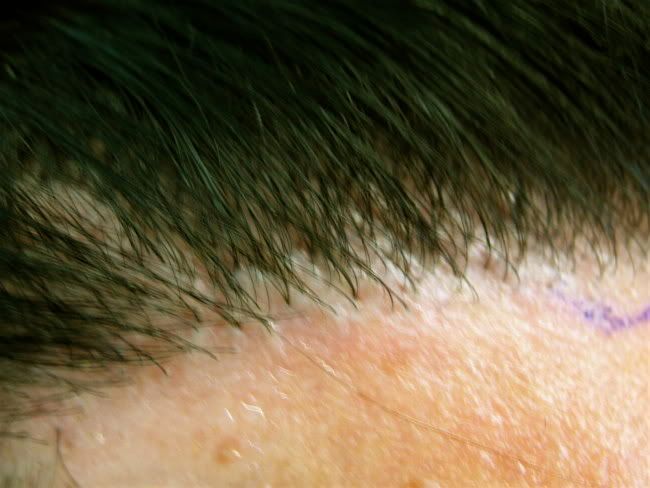
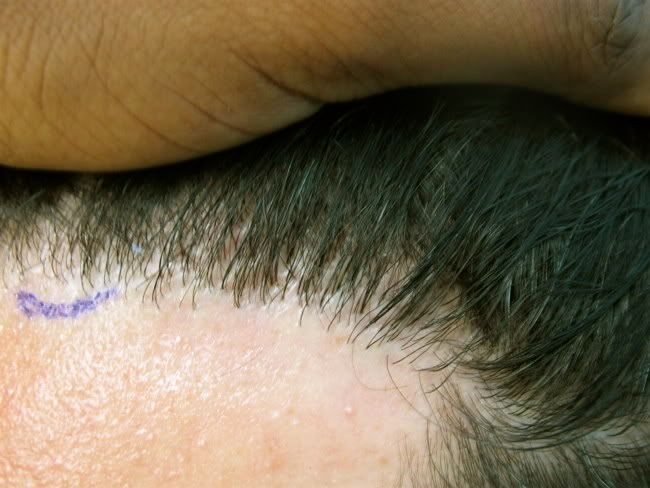
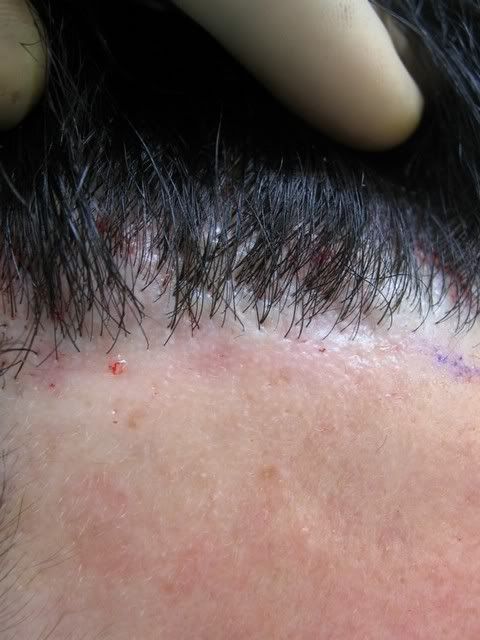
Post-op day 2:
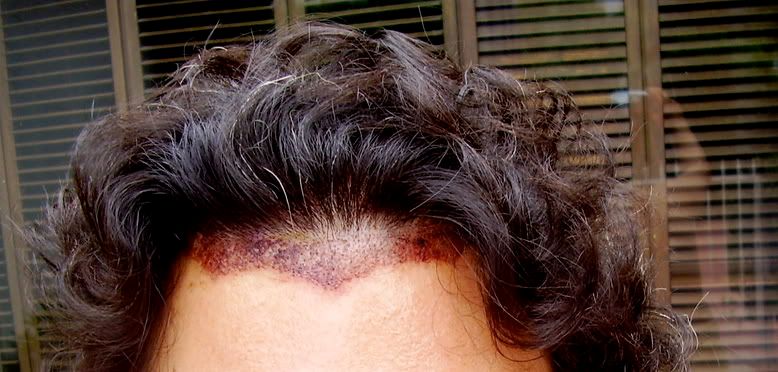
After 12 days:
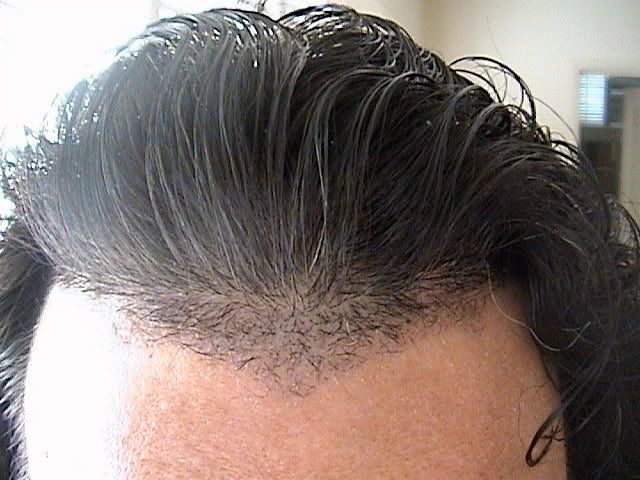
After about 6 months:
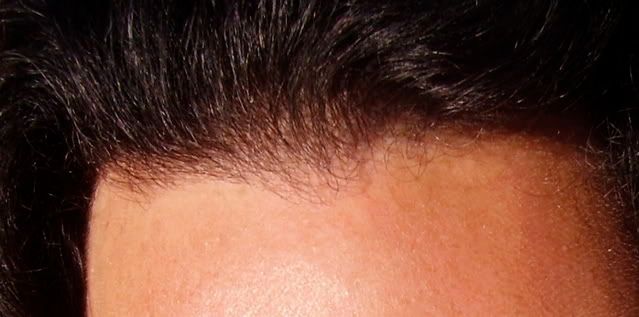

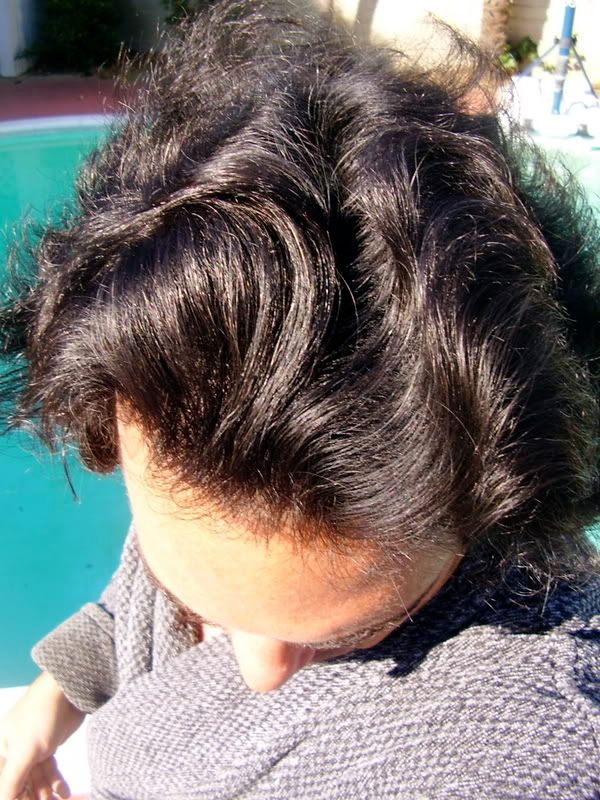
Wet:
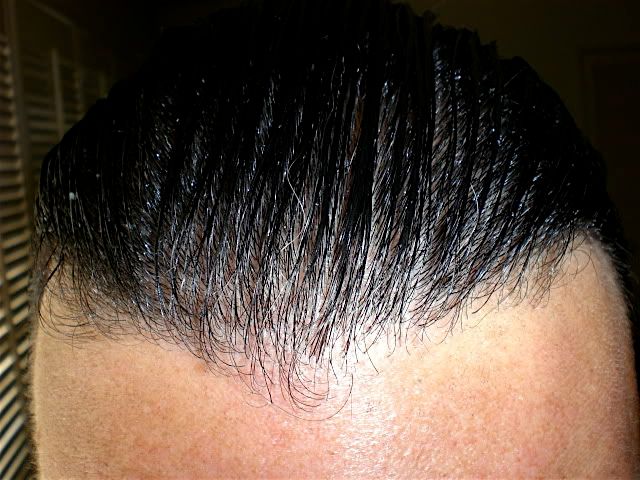
Donor area post-op day 2:

Donor area at about 3 months:
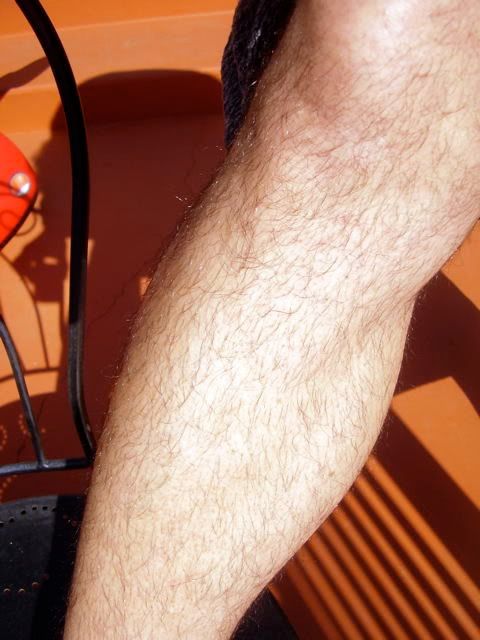
Video well after 2 years that explains the case before and after:
Needless to say, I’m thrilled with the result.
I’m in LA if you would like to see my result in person just PM me (that goes for anyone else as well).
I think your situation is highly “fixable” with a reasonable amount of grafts.
Best of luck to you bucket.
Hey Sofarsogood, thanks for including some pictures. You know, I remember seeing your post awhile back ago, and you went with Doctor Umar if I remember correctly. It does look very good. I will check out your personal story link to see how many grafts you ended up using. But this might be a good idea, thicken up behind, and then soften up the front. That way, the least amount of grafts must be used from the head.
I’m in Chicago now, and it is not practical for me to travel to LA. But if you don’t mind, I’ll make a note of your case, and might be asking you some specific questions when I actually get around to doing this, maybe as far as 6 months from now. Thank you.
» Bucket and Shanti you should read what Therapy said, he made a good point
» about lateral slits. Did your doctor use needles to plant the grafts?
So which one does what. Therapy says that needles cause black bumps, and Franklin says lateral slits cause them. As for me, I don’t know which one I got. I will email my doctor to see what it was, and post the results when they arrive.
No. What I mean is I heard this through the years about needles and lateral slit. I think it really depends on the charecteristics of ones hair that plays more a part in it.
» No. What I mean is I heard this through the years about needles and lateral
» slit. I think it really depends on the charecteristics of ones hair that
» plays more a part in it.
Oh ok. Actually, I’ve never heard of this terminology. I would guess lateral means the cuts go across the scalp, and needles they go straight down. Is this correct?
» No. What I mean is I heard this through the years about needles and lateral
» slit. I think it really depends on the charecteristics of ones hair that
» plays more a part in it.
Needles and laterl slit, what does that mean?
» Bucket and Shanti you should read what Therapy said, he made a good point
» about lateral slits. Did your doctor use needles to plant the grafts?
I’ve had both laterral slits and needles. I don’t think it matters. I think it come down to hair characteristics.
The black dot effect or bulb effect is probably the wrong terminology.
The situation with me arises because my donor hair is black and has thick strong shafts. When this thick strong shaft enters the skin on my hairline the thick black shaft meets contrasting white skin and the entry point is larger than say the natural native hair which has a thinner softer shaft.
It simply doesn’t give a subtle transition between the hair and scalp as my natural hair can.
Especially if you look at a girls hairline, they tend to be incredible soft and feathered and blend almost invisibly into the scalp. Where their hair meets their scalp it’s almost impossibly fine and delicate. A true work of art.
Now my natural hairline was never this soft but my donor hair is just too strong compared to my natural hairs in my hairline. In addition my natural hairline is made even softer and more feathered by the fact that it’s miniaturising through MPB.
Chuck in some strong, thick shaft donor hairs and the entry points are bound to be bigger and cause a sort of “black dot” where they enter the white skin. It’s not really a black dot I guess, it’s just a larger entry point than the surrounding native hairs.
Again, down to hair characteristics.
This is also why Sofarsogood has been successful with thinner leg hair. It’s finer and more transparent than his head donor. The transition between this thinner hair and hsi scalp is less and so blends better,
I tried it with nape hair and yes it does work but you need a lot of the finer hairs for it to work.
Ok, this is an example of what I mean and this guy actually has medium brown hair.
Where the thicker donor hair enters the skin it forms a dot of contrast. The hair shaft at point of entry is darker than the rest of the shaft as if the entry point was actually the “blub” of the hair.
It also makes the skin pores stand out/ bigger.
It’s not the doctors fault. Just hair characteristics I believe.
